Which One Dog for Pheasants…and Grouse
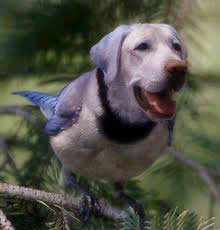 A recent post on the Pheasants Forever website quotes Steve Smith, head editor of Pointing Dog Journal and Retriever Journal, as saying the following to the question of “if you could have only one” dog:
A recent post on the Pheasants Forever website quotes Steve Smith, head editor of Pointing Dog Journal and Retriever Journal, as saying the following to the question of “if you could have only one” dog:
“If your idea of a good time is a German shorthair pointing, relocating, pointing, relocating all the way down a fencerow or creek bed with typical Teutonic thoroughness until the runner runs out of running room, then that is the dog for you, and that is your version of the sport. I’ve done it and have to remind myself to breathe.
“If you thrill to a pointer or setter blasting through the CRP for a hundred yards and then screeching into a pretzel point on a rooster that thought he’d wait there while the dog cruised right on by, then that’s how you should hunt. My pointers and setters have all sent shivers down my spine doing that very thing.
“If the shorthair never does catch up with the running rooster, so be it. If the pointer or setter does the screeching thing too close to the bird and it takes wing, well, it happens.
“But if someone said to me, ‘Mr. Smith, here are five 12ga shotshells, and there is an 80-acre patch of grass. If you do not return within 2 hours with three rooster pheasants, we will pull the fingernails off your grandchildren,’ then I take the shells, load my double, and whistle up Murphy, my Lab.
“Fun in hunting takes many forms, but when the weather closes in, the birds are scarce and spooky, and you are deadly serious about the whole enterprise, nothing puts birds in the bag like a flushing retriever. Nothing.”
There you go. One educated man’s opinion. About pheasant hunting.
And for Grouse…
While we’re far from dog experts, we’d agree with that choice for the grouse woods. Not necessarily a Lab, and emphasis on retrieving rather than flushing.
Because we know we’ll put up grouse without a dog – and we’ve seen many, many birds run from pointers and flush way out. But for recovering them, nothing beats a retriever. Certainly not a pointer….
Category: Dogs in general, Pheasants, Pheasants Forever, Ruffed Grouse





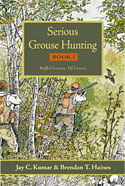
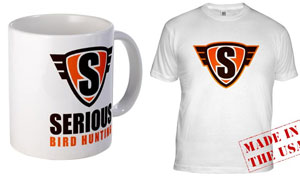
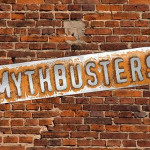
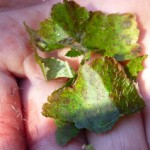
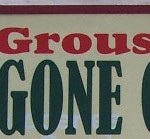
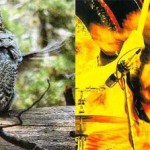
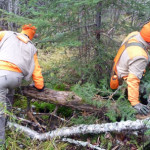
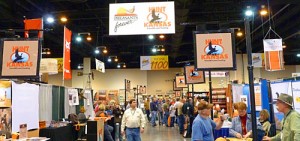
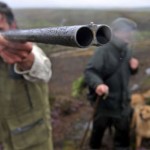
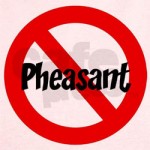
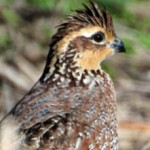
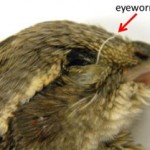
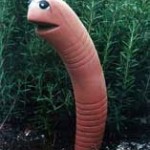
I am biased, prejudiced and downright ornery on this issue. I have owned both types of dogs,and hunted over almost every breed of hunting dog. A well trained dog will out hunt an untrained dog. The handler is the key. I have seen dogs who come from great lines that should be phenominal in the field and they aren’t worth spit. Then, I have seen dogs from the pound, who out hunt every dog in the field. The difference is the guy who is driving, not the breed of dog.
I love sending my shorthairs off on blind retreives for ducks, because I will have the bird back before the next flight of ducks wings over, and it is a very rare event if my dogs don’t
retrieve a bird, shot dead or crippled. I am not saying that a lab, springer or chessie won’t do as efficient a job.
Yes, a pointer will, and does bump birds. But a hard headed lab will follow a runner and bump the bird just as far out.
It all comes down to the guy with the whistle who can read his dogs and whistle them back when they get too far or issue a sit command when the dogs are following a runner.
I don’t care what kind of dog I am behind. As long as I have
a pocket full of shells, a couple of my buddies and acres of aspen in front of me.
Brave Brave souls are you. What a nice attempt to sell newspapers lol. It’s the conditions, conditions conditions. The right dog on the right conditions is what is best. Flushers have mediocre noses and high drive for retrieving. High powered nose on a flusher is not necessarily fun handling it pulls them out.
Tall grass, CRP yes flusher all day long. But heavy cover, thick grass on a fence row why waste the time plodding along when a pointer can make a pass and tell you to go on to the next field.
I have been in circumstances where my Brittanys have gone up against flusher and hands down put 4 or 5 in the bag before they knew what happened but put them in row corn and they are lost. Put them in CRP you are wasting your time with them.
In these conditions he was talking about pheasants in this scenario the damned worst running bird of all time exclusively bread and reared with track shoes.
I like all dogs and the best dog is a good one. But that said give him his 5 shells at least grand kids wont have to trim anything for a while.
Very interesting comment. I have hunted grouse for 37 years here in Kentucky with annual trips to Wisconsin. Close hunting setters have been my choice for those years until two years ago when I brought home a small (48 lbs) female lab. She has found more birds I would have bet I missed, put up more grouse in the most unlikely cover, and actually waits for me if she thinks ” I am out of range”. She has brought back the excitement of grouse hunting in an area where we really have to work to see a bird. Try a lab.
As far as late season pheasants in South Dakota it’s hard to beat a lab. In the grouse woods in northern MN my brittany gets it done. Does Smith really think he can get 3 birds with only 5 shells?
I guess I’ve never had the opportunity to upland hunt with a good lab here in Maine. The birds typically flush too far out with the ruckus a lab makes in our dense forests. The best I’ve hunted over are GSP’s and that includes woodcock as well. That being said, I’ll keep my Brittanyl
I once had a GSP named Sadie. It was John Rabidou’s dog. John lived in Hondo, Texas. Sadie was kind of a super freak of sorts. If she sensed a pheasant running she would flank out to the side and run a 100 yards down field and work back toward me. Well, you know the outcome for there. This is something that I don’t believe can be taught. Sadie did this often, so it wasn’t a fluke either. She had an entirely different style for grouse. She knew how to make the adjustments accordingly. I guess we must realize that dogs are as individual as people, and I think it unfair to cateogorize a breed as being, A+B=C.
Sure, for pheasants a flushing dog will work, but for ruffed grouse, the king of game birds, a GOOD pointing dog with STRONG retreiving skills (read into that one of the continental breeds, like GSP, GWP, Griffon) will end the day will more birds in your vest. Hunting over a flushing dog is like waiting for a bomb to explode, you’re never ready in the thick cover where grouse live.
Flushing is what a toilet does….
For me the best Pheasant dog is a Wesslpointer you have the best of both breeds! The coat, cooperation, retrieving ability of the lab, and athletic ,prey drive of the short hair!
If all you want to do is kill Grouse then take your Lab and go to town.
If you want the Whole experience of Grouse hunting walk behing a Hard charging Setter in the woods. The style and grace of a Setter as it floats through the Grouse woods is unmatched.
Also read New England Grouse Shooting by William Harden Foster
I hunt a lab for … well everything. She is good upland dog, but cut her teeth on ducks and pheasants. She is my best friend, and I am going to keep as #1 for the next two seasons (she is 8 yrs old). It’s time to get a new dog to train up, and since I got a place in prime MI grouse country 3 yrs ago, this will be a primary role.
I do want a pointing dog – but as a late season duck hunter, I feel like I need a cold water retriever.
I am going with a pointing lab. I’ve seen the breeding stock for my planned pup, and these are lock-tite pointers. I have heard the nay Sayers – but I think I have very little to lose, since I already enjoy grouse hunting over a flusher (while confessing that I think I would see better shooting opptys with a careful/early scent pointing dog).
Curt
I vote for the GSP for best all around conditions. I agree the handler has a big part in how well the outcome is for the hunters and making sure the dog and hunters run the best plan possible to harvest the most birds for the limit. Also you get dogs that
occasional dog that is just smarter naturally than others within all breeds and they can do some amazing things like quartering out, or pointing back behind them when they walk by a bird. I guess the best day in the field is really just seeing your favorite dog work to the best of its and your ability.
Having hunted over both pointers & retrievers I’ll take my 7 year old Y/Lab Abby. She rarely gets more than 25 yards away, is a retrieving freak & best of all at the end of a hard day in the U.P. woods, she’s the camp clown.
for grouse , my pick is ENGLISH SETTER.
for pheasants.SPRINGER SPANIEL
GSP is about best all around.
i have small lab and like him very much.
my new dog is SMALL MUNSTERLANDER.